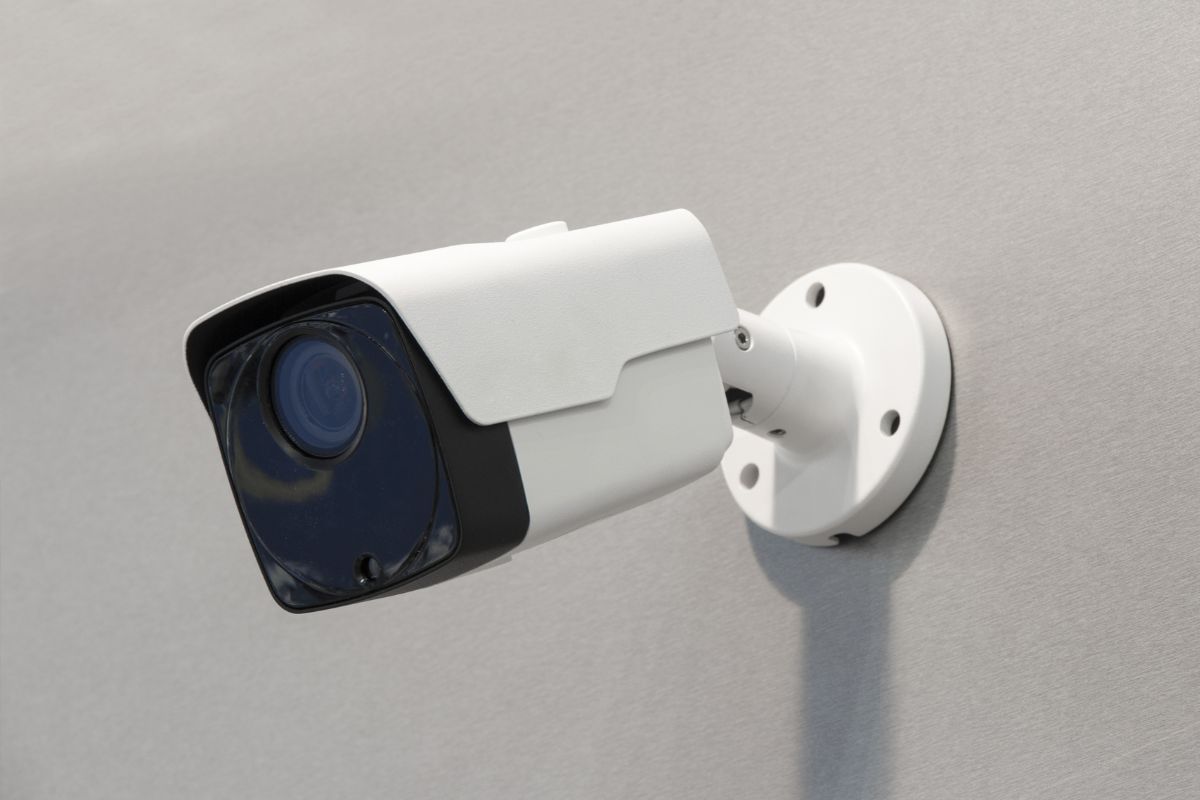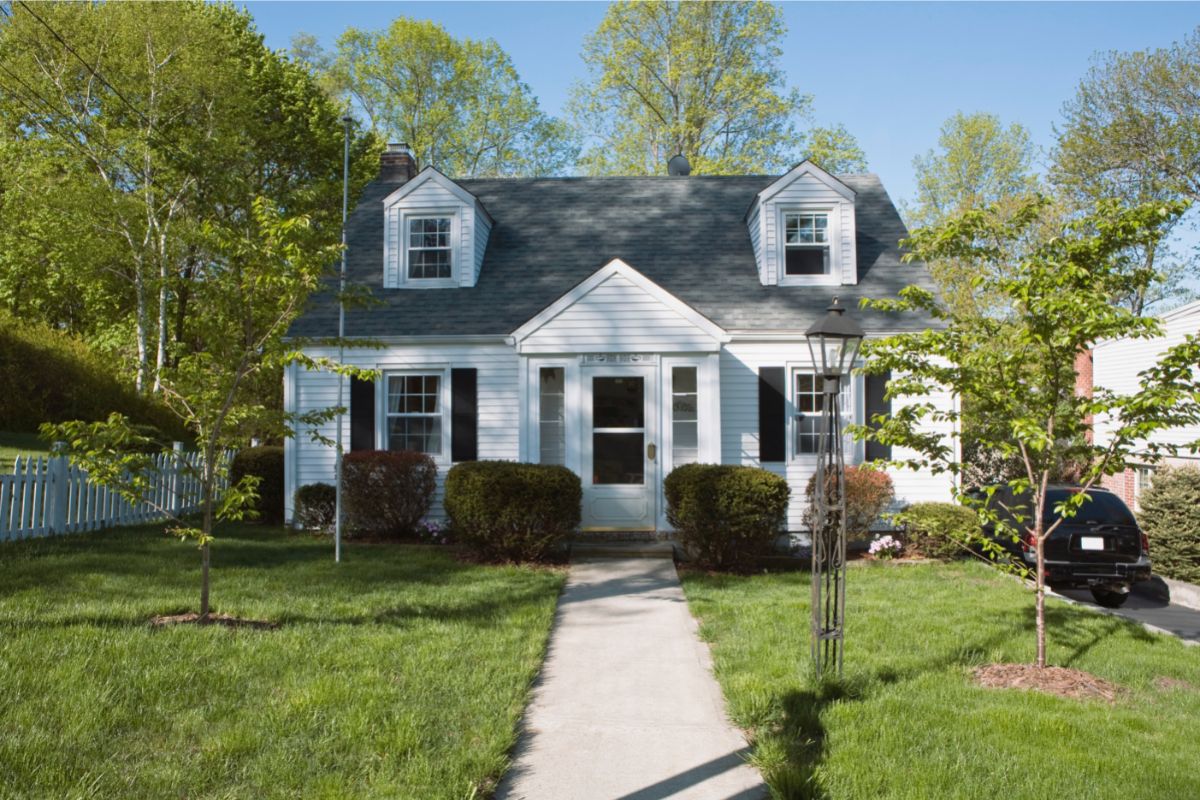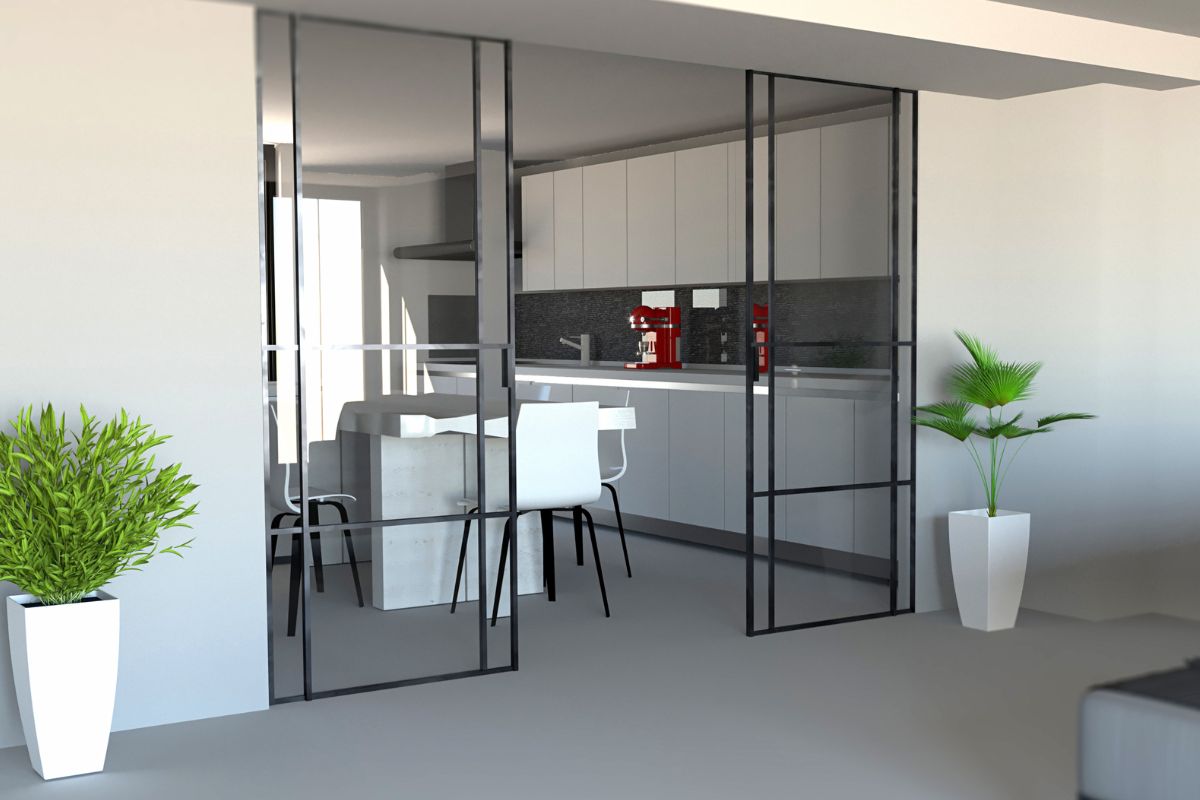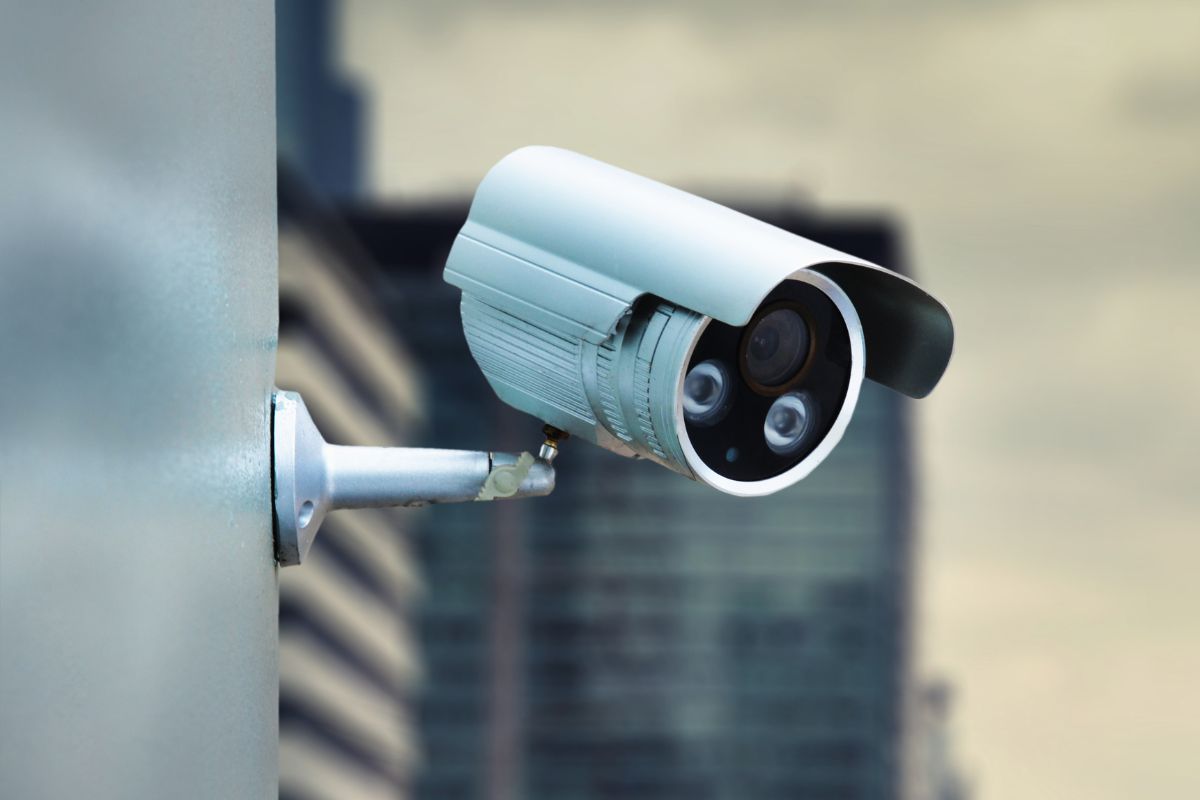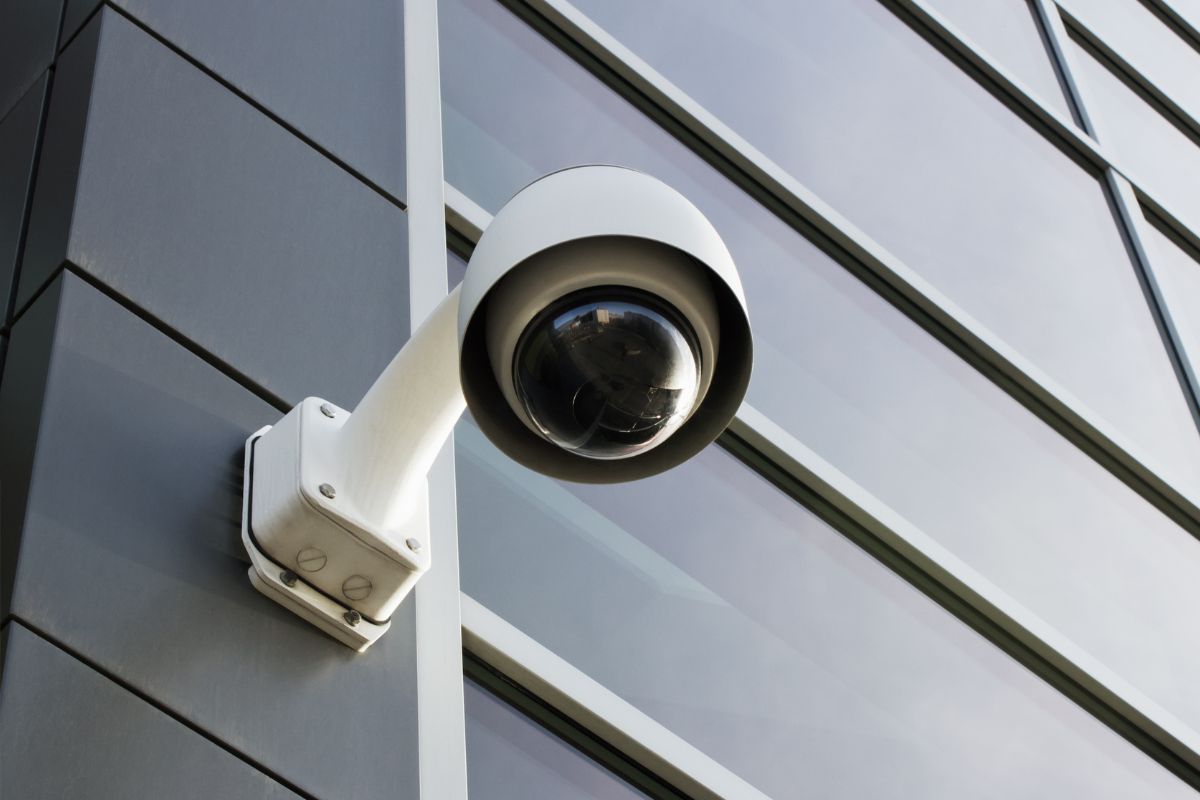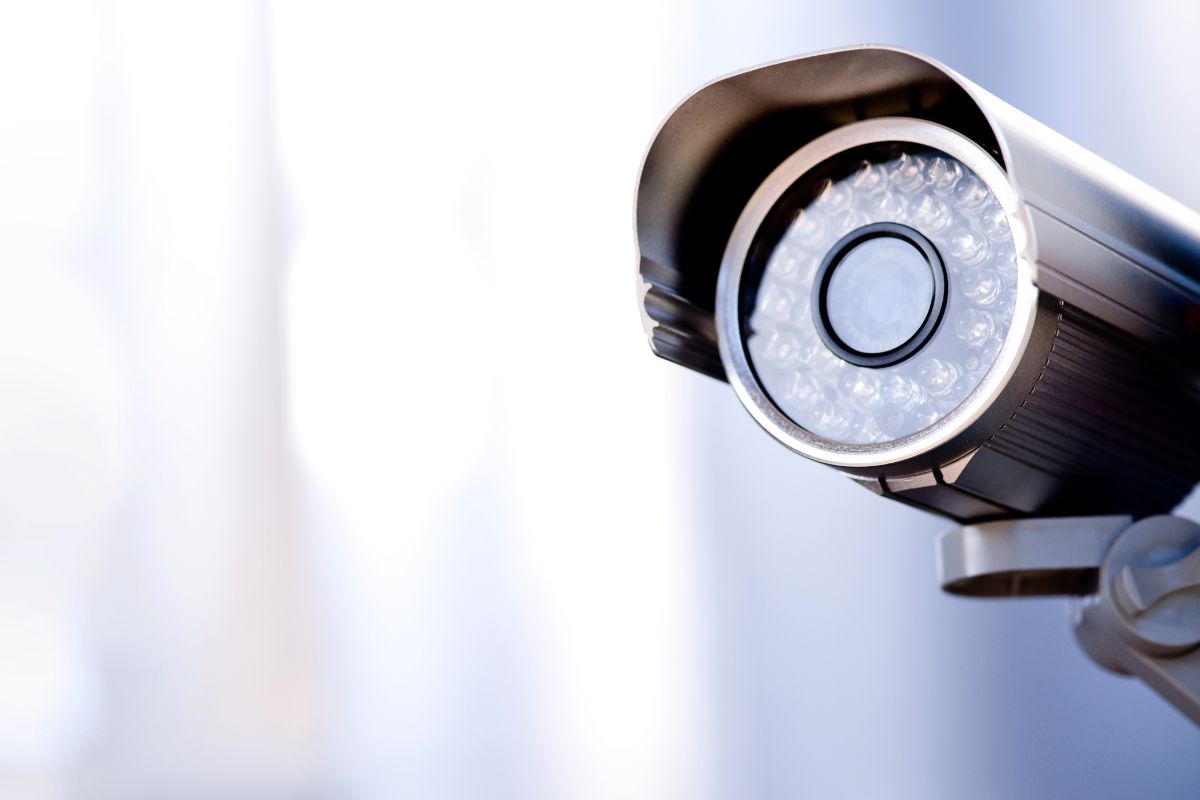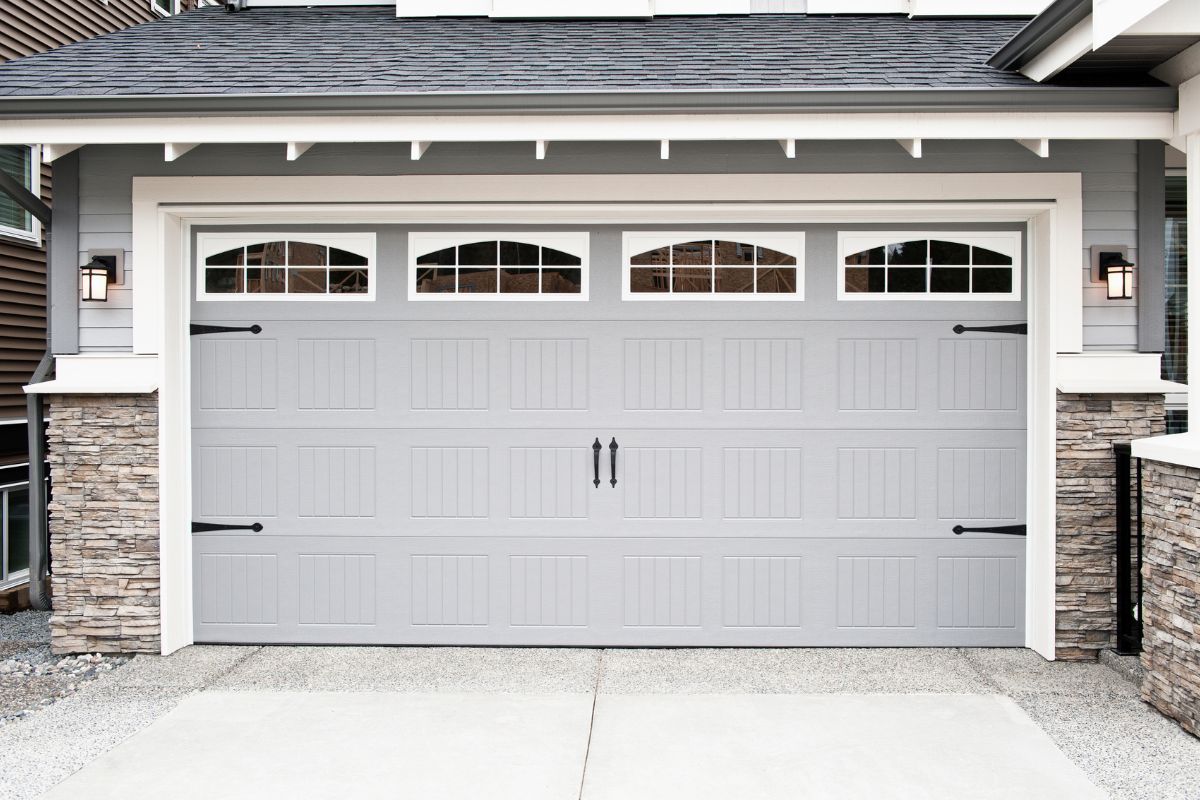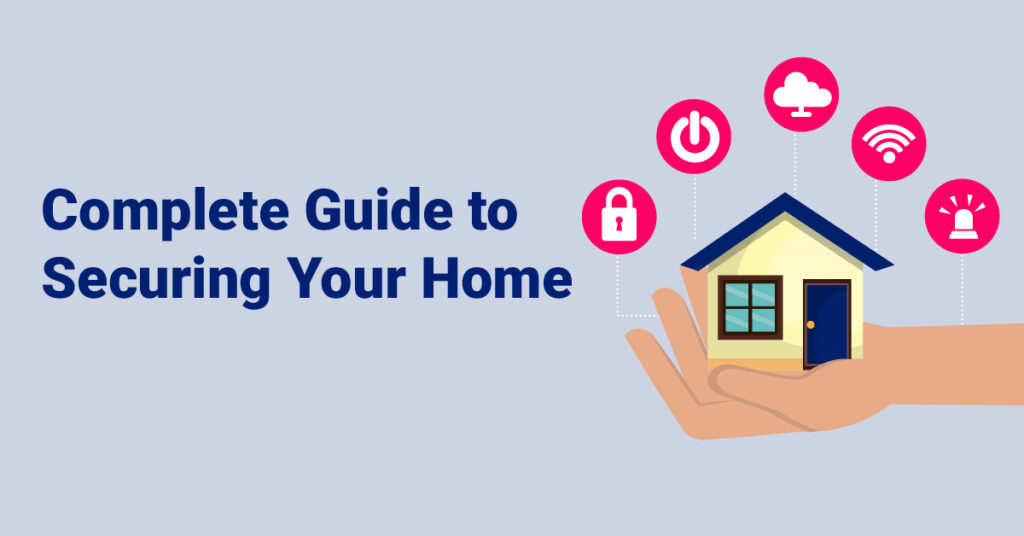
Securing your home is one of the most important steps to protect yourself, your family, and your belongings.
Whether it’s a simple lock on the door or more comprehensive security measures, there are many ways to ensure that your home remains safe and secure.
In this guide, we will cover all aspects of home security – from basic locks to advanced security systems – so you can make an informed decision about the best way to protect your home.

Assess Your Current Home Security:
Do Windows And Doors Have Visible Locks?
It is essential to make sure you lock your windows when you move into a new home and that they are visible to you and not any intruders.
Unfortunately, your average window latch may not provide enough protection. Installing aftermarket window locks or key-operated levers will go a long way in keeping crooks away from your home’s windows.
Studies show that there has been a 7% decline in lock-snapping break-ins since 2011 because window locks and key-operated levers have become more effective and are harder to break. If you can’t ensure your window and door locks aren’t visible, upgrade them! They aren’t worth a burglar’s time.
You can also take additional steps to secure the area around and beneath the window, such as shaping shrubs or installing motion-detecting lights near them.
Installing metal bars and an alarm system can also be a stronger solution. If possible, you should try to select windows constructed from strong materials like aluminum or steel that are less likely to be opened through forced entry.
Regardless, ensuring all doors and windows are locked is the first step toward preventing burglaries in any home.
Window Bars
Window bars are one of the most effective ways to burglar-proof your windows and protect your home. They are usually constructed from either steel or iron, and you can customize them to fit the dimensions of your windows.
Security Film
Window security film is an effective way to add an extra layer of protection against intruders. It can hold the glass in place even if it gets shattered or broken, and it can provide you with the necessary time to call for help in case of an attempted break-in.
The film is applied directly to the window surface and is virtually invisible once installed, not detracting from your home’s decor.
Planting Thorny Shrubs
Planting thorny shrubs near windows can be a great way to keep out unwanted visitors. Thorny shrubs such as roses and holly feature long and sharp thorns that act as a natural barrier between the window and would-be intruders.
Not only do the spiky shrubs create an intimidating physical impediment, but they will also scratch anyone who tries to get too close.
Are Any Spare Keys Visible?
Leaving a spare key outside your home is a convenience for both you and your family, but it can also be an invitation to burglars.
While it may not be extremely visible, if someone observes you getting the key once, they will easily remember where to look to access your property. Thankfully, there are many different ways to prepare a secure key box outside your home that are surprisingly easy to use.
These boxes are often known as ‘key safes’ and consist of boxes that can be screwed into walls or hung outside.
They are designed with security in mind and on the side or bottom of it there are usually numbers that, when scrolled open the safe, allow access while still being protected from intruders.
How Secure Is The Shed And Garage?
Garages and sheds are two of the most common areas for people to store their valuable items, from prized possessions to expensive tools.
Unfortunately, these locations are also easy targets for thieves who can easily pick locks or break into doors.
Because of this, it is important to properly secure any garage or shed to protect it from burglars.
One way to do this is by installing a good-quality lock with a heavy-duty deadbolt, or by adding security cameras.
Is It Noisy To Access Your House For A Burglar?
The addition of noisy elements to a home is a great way to alert anyone who is home of an incoming intruder. Gravel or motion sensors act as tell-tale signs that someone is on your property, which often serves as a deterrent for those looking to unlawfully enter.
Having said this, it’s important to consider the sounds from the surrounding environment when implementing such methods.
If your neighborhood is generally quite loud throughout the day, then it may be difficult for you and your family to recognize noises such as someone walking on gravel, or a sensor going off.
To mitigate these risks, homeowners can look into other methods of entry detection. For example, installing window and door sensors will inform you whether an intruder has breached your perimeter, no matter how noisy the neighborhood might be.
Video cameras offer another advantage here; by recording potential break-in attempts and monitoring areas around the house daily, homeowners have much greater control over their home security even while away from the premises.
Do You Have A Security System?
Home security systems are a great way to protect your family and property from intruders, theft, and other potential dangers. With the variety of options available on the market, it can be difficult to understand what type of system is best for you.
Fortunately, there is no need to have an in-depth knowledge of home security systems to make an informed decision about which system will work for you.
Understanding the basic components and features can help ensure that you’re making the right choice when purchasing or installing a home security system.
What is A Home Security System?
A home security system is an important tool to protect your property, family, and possessions.
It typically consists of a control panel that connects to various devices such as interior and exterior motion sensors, floodlights, sirens, or alarms.
By connecting all of these components together, the system can detect any movement around your home while also providing extra peace of mind.
For example, some systems are equipped with motion sensors that will activate the siren if they detect someone walking around your property.
Additionally, many systems feature integration with alarm companies that can alert the police in case of an emergency.
These systems offer extensive protection against potential intruders by making it more difficult for them to successfully break-in. This makes your home far less appealing than other targets and keeps you one step ahead if someone attempts a break-in anyway.
How Do Home Security Systems Work?
The most important pieces of a home security system include motion sensors, control panels, and floodlight alarms
Sensors
Motion sensors detect any unusual activity near doors or windows and trigger an alarm if movement is detected.
Sensors are a crucial aspect of home security systems, as they detect any breaches and alert the system’s central control panel.
With sensors placed inside and outside, the system can detect intruders attempting to gain access from all directions.
Control Panels
Control panels are the central point of command for any home security system. Enhancing safety in the home, this vital component can be used by authorized persons to arm or disarm an alarm.
Through the control panel, users have access to personal passcodes and voice commands that make it easy to set or deactivate the alarm with just a few clicks.
Furthermore, if at any point an unauthorized person attempts to access your security system using incorrect codes or phrases, it will trigger a loud siren warning anyone nearby of a potential threat.
Door And Window Sensors
These sensors are essential in a home security system. The two pieces that make up a door or window sensor consist of one that can be installed on your actual window or door and another installed on the window sill or door frame.
When your window or door is closed, these pieces should come into contact with each other and complete an electrical circuit.
This will notify the control panel when your system is armed that a break in the circuit has occurred and set off an alarm to alert those nearby of any suspicious activity going on.
Floodlights
Floodlights are an important addition to a home’s exterior security arsenal. They work much like a motion sensor in that they detect any movement around the exterior area and then turn on to flood the entire area with light.
This not only illuminates potential intruders, so they can be noticed, but will also usually scare them away.
If not, the lights give the homeowner a good view of what is going on outside, so they can make an informed decision such as whether to call the police or deal with it themselves.
Types of Home Security Systems
Electric Current Alarm
Electric current alarm systems are one of the most basic security measures that homeowners can take.
Installed during construction and typically connected to entry points like windows and doors, these components work by sending a low-voltage electrical circuit triggering an audible alarm sound.
Monitored System
When it comes to home security systems, there are two main types; monitored and unmonitored.
Monitored security systems are more expensive than the unmonitored varieties and typically come with a host of features, as well as installation fees that can range up to $1,000.
However, these systems provide the most protection for homes since they come with basic components.
Unmonitored System
Unmonitored security systems are more affordable than their monitored counterparts but require more effort on the part of homeowners for upkeep and maintenance.
Most commonly these packages include access control panels wired with controlling capabilities along with simple resolutions such as door chimes which alert residents when movement is detected.
Furthermore, these may also include certain detection appliances such as passive infrared sensors that detect temperature changes.
What About Costs?
Having a home security system installed is a great way to keep your family and property safe.
Many providers offer competitive prices for systems that include monitoring, which is the most vital step in protecting against unwanted intrusions.
The cost of a home security system varies depending on the type of equipment you choose and whether you are leasing or buying it outright.
An average of $30 per month is what studies suggest as the standard price for professional monitoring services, with the proper installation and consultation fees adding up to the total fee.
It’s common to pay additional upfront costs to get your systems up and running, while some recent discounts make purchasing equipment even more affordable than before.
Secure Your Doors And Windows Using Smart Technology
Home automation is a great way to help boost the security of your home. With remote or scheduled control, you can make sure your house looks occupied when you’re away or easily respond to suspicious activity from anywhere in the world.
You can get real-time alerts when potential thieves may be trying to gain access so that you can act quickly and deter them.
One of our favorite ways to use home automation for security is scheduling lights (and even a TV set) to turn on and off at predetermined times while we are away on vacation.
This gives off an illusion that people are still at home, decreasing the chances that someone will attempt unauthorized entry into your property.
Install A Home Security Camera
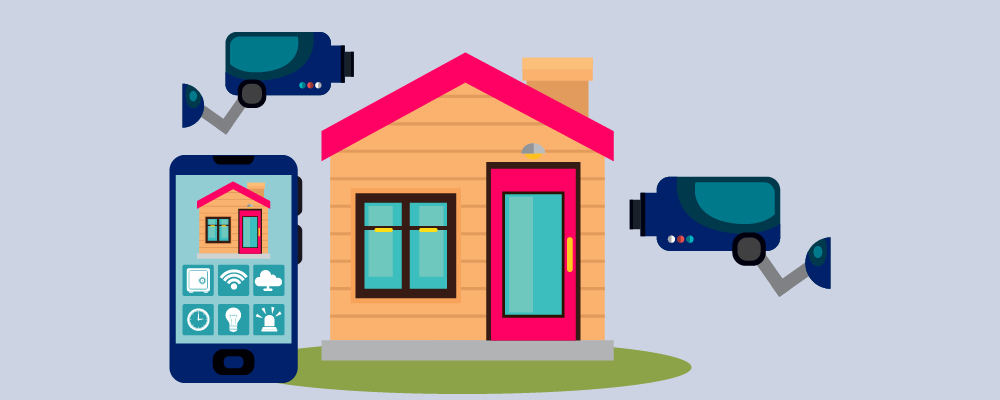
Security cameras provide an effective way to deter potential burglars or other criminals, while also offering tangible evidence of a crime should one occur.
Installing them in the right places around your home, like garages and front doors, helps create a secure perimeter an intruder would have difficulty dodging.
Some security cameras even have motion detectors built-in, so they can detect movement within their range and alert you via a mobile app.
Another great feature of having security cameras is that it allows you to see what’s going on in your home remotely at any time. With the help of Wi-Fi security systems with mobile apps, you can keep an eye on everything from anywhere in the world.
To ensure complete protection, be sure to encrypt your wireless network with encryption and use complex passwords for both your wireless network and for the app used to access the footage captured by your security system.
Benefits Of Home Security Cameras
Installing a home security camera system allows for quick detection of any suspicious activity around or within your property.
Having a visible camera on the premises is often enough of a deterrent for those looking to break in, as well as those who try to vandalize your property.
In the unfortunate event of actually being burglarized, having recorded footage from your security cameras can serve as key evidence for police investigations – hopefully helping officers find the culprits responsible quickly and efficiently!
Full Privacy
Privacy is an important consideration when it comes to home security cameras. While wireless cameras use the internet to transmit footage, this means it can be viewed by other parties unless you take steps to protect your system.
Before buying a camera, make sure you can trust the company selling it and ensure that it has privacy features such as secure authentication like two-factor authentication.
Things To Consider Before Buying A Home Security Camera
Before going ahead with any purchase of a home security camera, consider if they are really necessary in your particular case. Spending money on a piece of expensive equipment that’s not fit for purpose won’t benefit anyone.
Consider factors such as accessibility and ease of use along with personal preferences before investing in a home security camera system.
Get A Safe To Secure Your Valuables
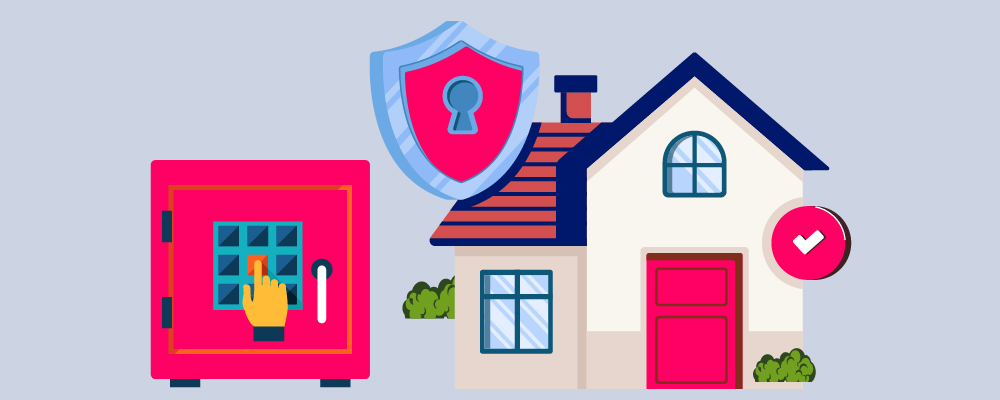
Having a safe in your home is one of the best ways to prevent the theft of your valuables. Whether it be jewelry, cash, or vital documents like passports, having a secure way to store items can provide much-needed peace of mind.
When choosing a safe, make sure it’s fire-resistant, waterproof, and heavy enough that someone won’t be able to take it with them if they break in.
Additionally, purchase a safe with redundant locks so that if one lock fails, you have another layer of defense in place. You should also choose the right size safe based on what you plan to store in it; bigger may not always be better, as bigger safes may not provide adequate protection for smaller items.
By getting an appropriate size and secure safe, you will be making sure that your prized possessions remain secure even if an intruder makes their way past the many other layers of security you have put into place for your home.
Keep Your Valuables Hidden
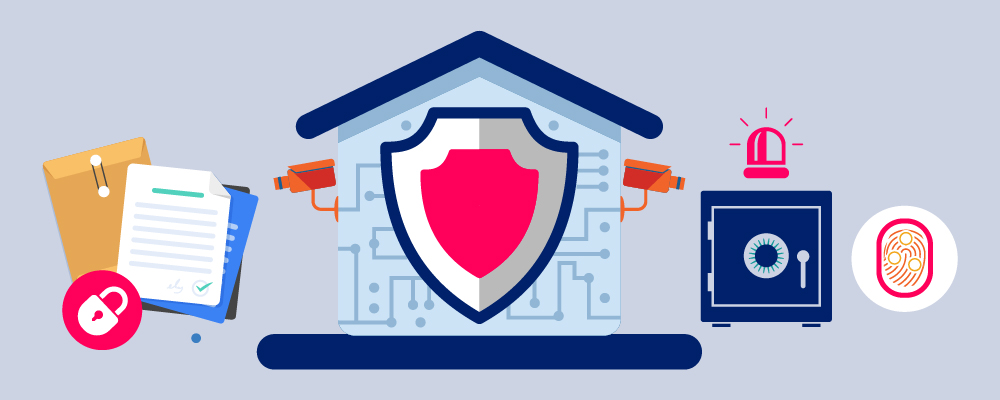
Property crimes are a major concern for many people. While it’s important to be aware of your surroundings and take the necessary precautions against such incidents, it is also essential to be proactive about safeguarding your valuables.
The most important thing you can do to protect what’s precious to you is to keep valuables out of sight.
Any items that cannot be moved or concealed should be kept as far away from windows and doors as possible, preventing any outsiders from getting close enough to see them.
Keeping items out of sight doesn’t just mean around windows and doors – it applies inside too; lock all items up when not using them, so there is no chance that anyone could stumble upon an item on display sitting atop a coffee table or sideboard either.
Making Them Identifiable
One of the most important things when it comes to maintaining your home is preventing burglary.
One way to do this is by keeping your valuables from being stolen in the first place. Taking some proactive steps can make it much easier for you and law enforcement to identify stolen items should they fall into the wrong hands.
By writing your last name or initials on any valuable items, you can make them more easily identifiable if they are ever taken.
Keeping track of all valuable items in this way will help you keep them safe and give authorities an easier time locating them if something dire were to occur.
Monitor Activity At Each Entry
A ring indoor camera is an excellent choice for home security as it offers a high degree of versatility when it comes to placement inside the home.
It is small and compact, allowing you to place it almost anywhere there is easy access to a power outlet.
This means you can monitor what’s going on in any room at any time, whether you’re away or just in another area of your house. Therefore, you can monitor activity at each entry.
Understand Your Daily Routines
Routines aren’t just about making sure everyone knows what their responsibilities are each day. They can also be used to track your movements for potential burglars to plan what time is best to target your home.
Try to switch your routines up a bit to take that target off your back and ward away potential threats.
If you’re someone who isn’t repetitive in the times of day you do things, your home will become less of a target because it will be more difficult to break in.
Lock Down Your Wi-Fi Network

It’s essential to secure your home Wi-Fi Network to protect yourself from potential cybersecurity threats.
Hackers may be able to access confidential information from your router, use it in phishing attacks, or even access devices connected to the router, such as security cameras or thermostats.
As such, it is important to lock down your wireless network and take steps to ensure its safety.
Secure Your Router
First and foremost, you should secure your wireless router by setting up a strong password that is unique and contains letters, numbers, and symbols. You can also change the default name of the Wi-Fi network so that it is less recognizable.
Enable Encryption
Furthermore, enable encryption settings such as WPA2 Encryption so that your data transmission is secure. Additionally, you should limit the number of connections allowed on the network and only allow trusted devices access to it.
Virtual Private Networks
Finally, consider using a Virtual Private Network service for an extra layer of protection from any potential hackers who might be looking for a way into your system.
By following these tips for locking down your Wi-Fi network, you will greatly reduce the chances of falling victim to online threats or having your personal information accessed without permission.
Be Careful With Your Keys
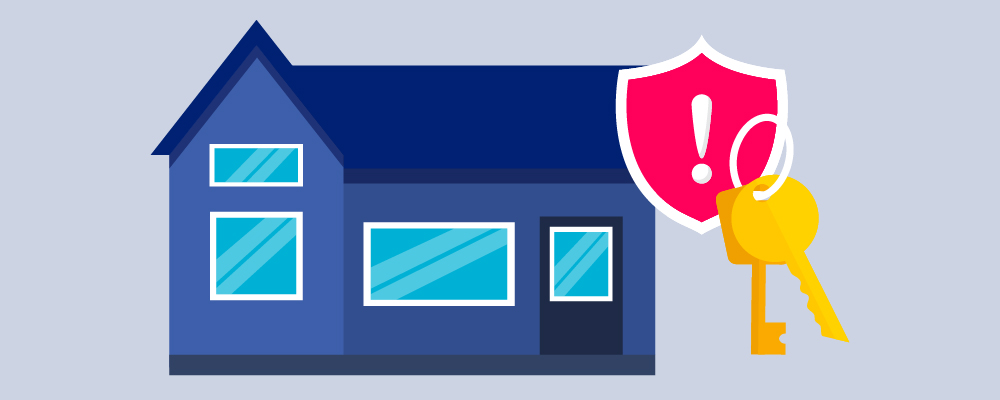
No matter how resourceful you may be, never leave a spare key under the doormat. This is one of the oldest tricks in the book, and it’s also one of the first places that an intruder will look to get easy access to your home.
It’s best to keep your spare keys as far away from your entrance or door as possible. Don’t underestimate just how staking out an area for a few minutes could get them into your home unnoticed.
If you have multiple locations for different sets of keys, this reduces the odds that intruders can find them easily.
Lock Your Garage
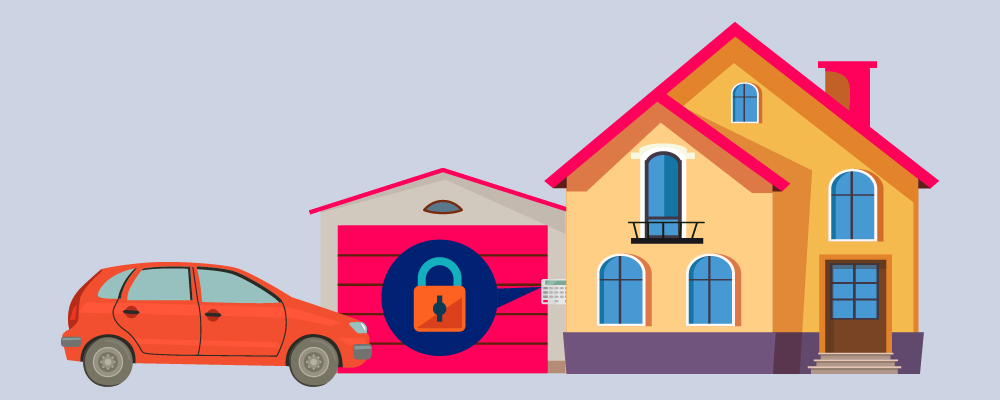
The garage should never be forgotten when considering home safety. This entry point of a home is becoming increasingly popular with criminals.
Many times, even if they cannot access the house, there are likely valuable items stored in the garage, such as tools, sports equipment, and more that thieves can get their hands on quickly. So it is important to always lock all doors to the garage-both inside and out.
Furthermore, keeping your garage door opener in the house as opposed to leaving it in your car offers a degree of extra security.
Also, making sure not to enter any security codes to open the garage when in front of delivery people or neighbors can help protect you from burglars who could see it and steal it later.
These small steps can go a long way in protecting your valuables from being taken. Investing in an alarm system for your garage that sounds upon any opening or movement is also another great idea for increasing safety around the area.
Garage Door Openers
If you want some extra security, you could invest in a garage door opener specifically designed to be controlled by you, and you alone.
Meaning that you can check up on your garage when you’re not even home with certain openers and open and close while away from the house.
Smart garage door opener controllers are a great purchase for anyone looking for additional security and convenience.
These devices connect to your existing garage door opener and give you the ability to check on or operate your door from any location. You’ll be able to ensure that you never forgot to close your door or have peace of mind when it comes to who else has access to it.
Smart garage controllers come in a range of prices, from around $30 up to $180, making them accessible while still providing high-tech features and convenience.
Install Outdoor Lighting
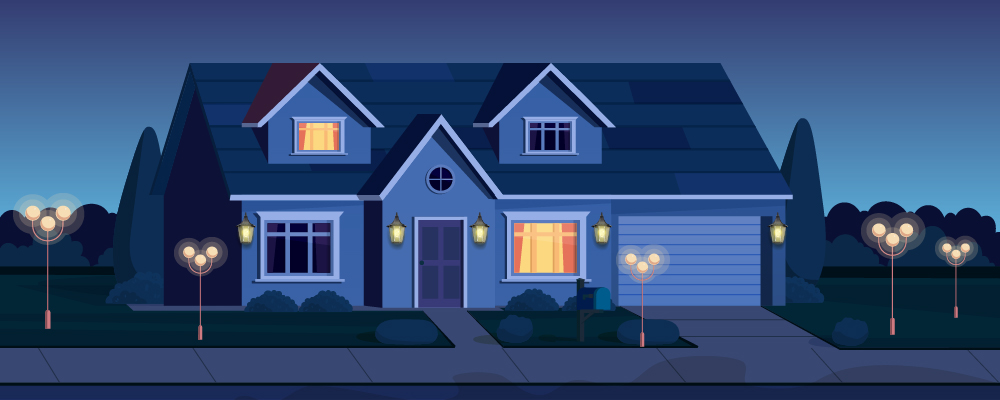
Outdoor lighting is a great way to protect your home and property from intruders. Not only is it a deterrent for vandals and burglars, but it can also add a layer of security and peace of mind when you come home late at night.
Outdoor lighting is an effective solution as criminals don’t like to be in the spotlight, so by strategically placing lights around your front and backyards, along pathways, and near the garage or other outdoor structures, you can deter unwanted visitors.
Motion-Activated Lights
Motion-activated lights are a great way to upgrade outdoor security lighting by making sure any movements on your property are illuminated right away.
This visibility helps alert you to potential suspicious activities so that appropriate measures can be taken should anything happen while you’re away.
Smart outdoor lighting can be easily controlled by your smartphone, smartphone apps can set your outdoor lighting to be triggered by motions and sensors, which is particularly handy for any activity from potential threats or intruders.
Make It Look Like Someone Is Always Home
A home looks more occupied when there is evidence that someone inhabits it regularly. Unfortunately, a house can become a target for burglary when left empty for too long, leaving homeowners at risk of theft and vandalism.
To make sure their houses are not targeted by burglars, many people have started incorporating various strategies to make it appear that their homes are in use.
One of the most popular techniques for making a home appear occupied is setting up timed lighting throughout the house, as if somebody was flipping a light switch on and off in each room. This is a great way to make it look like someone is always home.
Keep The Lawn Maintained
A good-looking lawn can add to the curb appeal of your property and make it look inviting to guests, while an unkempt one might indicate that no one is home. To keep your lawn looking its best, make sure that the grass is cut regularly.
Ask Neighbors To Collect Mail
Having a trusty neighbor or friend collect your mail while you’re away is a great way to ensure your mail isn’t left unattended in an empty mailbox.
Talk to your neighbors or find a responsible family member and make arrangements for them to collect the mail from your mailbox twice a day and possibly even check it for any important letters.
Stay Alert To Environmental Risks Too
No one wants to think about potential disasters and emergencies, but it’s important that everyone around the world is prepared for a variety of threats.
Having valuable resources on how you can best plan for all sorts of disasters that could occur, from hurricanes to wildfires and more, is the best way to keep you safe from environmental risks.
Taking some simple precautions such as discussing plans with family members and downloading useful apps can make all the difference in an emergency.
Having a home, vehicle, or other valuable property is an important part of people’s lives. Unfortunately, disasters, both man-made and natural, do not discriminate when it comes to the things that mean the most to us.
To protect yourself financially and to get back on your feet as quickly as possible following an unforeseen event, it’s essential to document your property ahead of time.
Final Thoughts
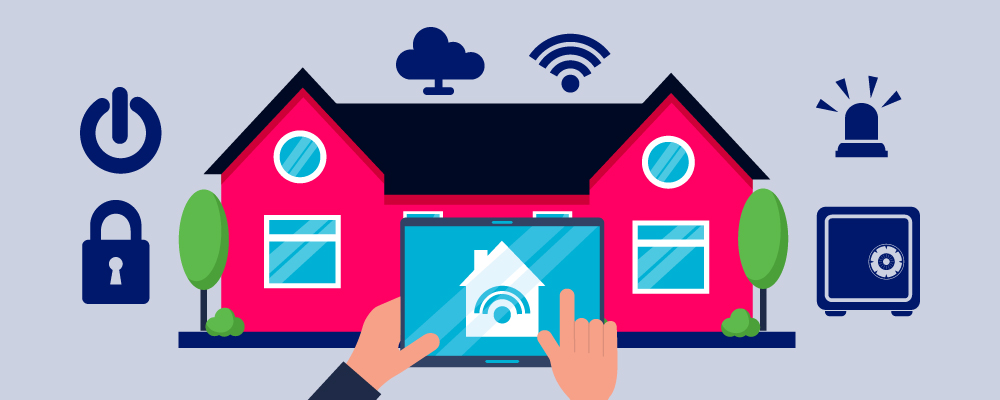
Securing your home doesn’t have to be overwhelming. By taking the steps outlined above, you can make sure that your home and its contents are safe from burglars, environmental risks, or other dangers.
From installing motion-activated lights around the property to staying alert to local risks, these steps will help ensure that you and your family remain safe and secure in your home.
- Stay Protected: Shielding Your Android Phone from Omni RAT and Malicious Apps - August 7, 2023
- Complete Guide To Protecting Your Digital Privacy - May 16, 2023
- Complete Guide To Securing Your Home - April 11, 2023

